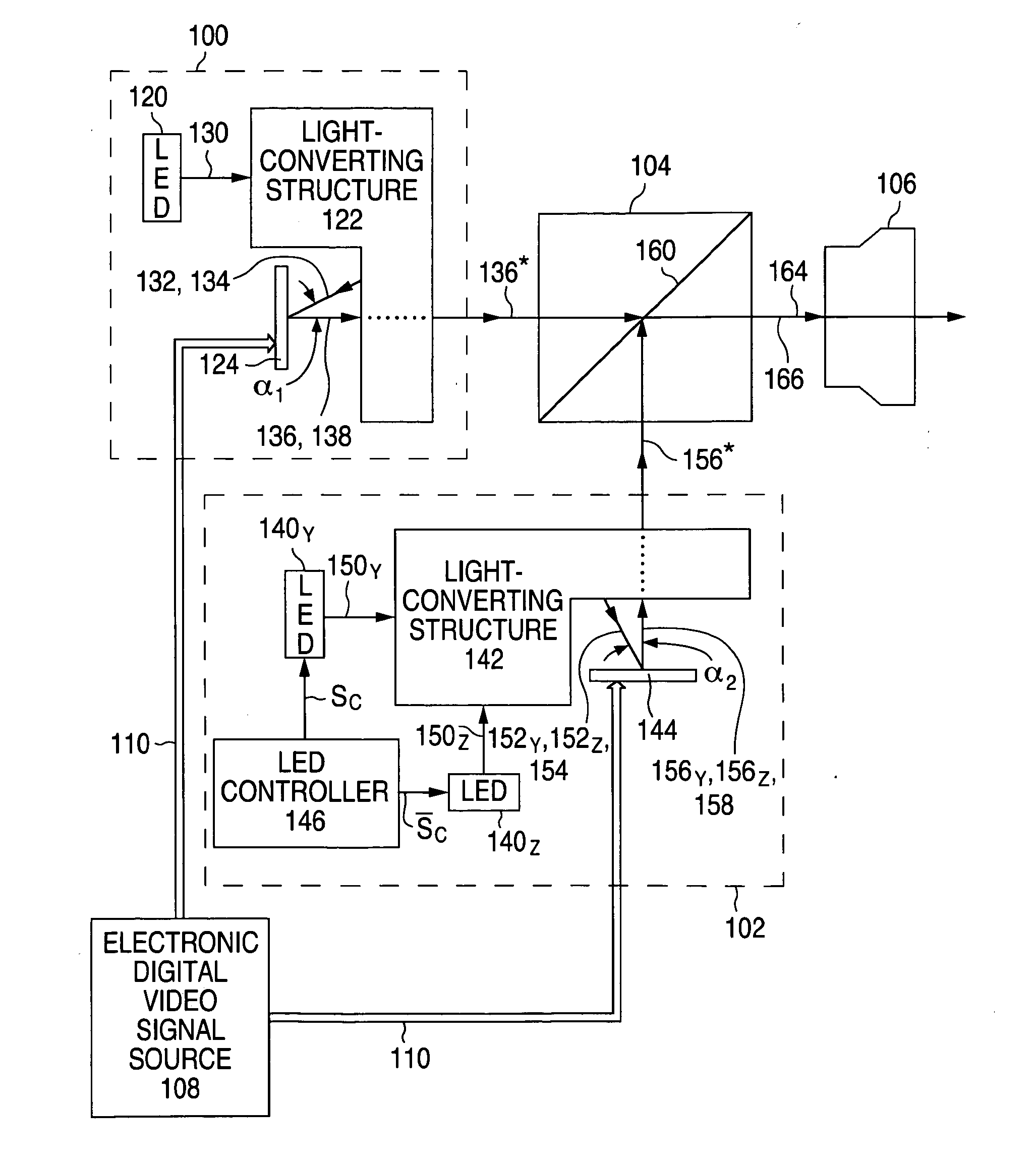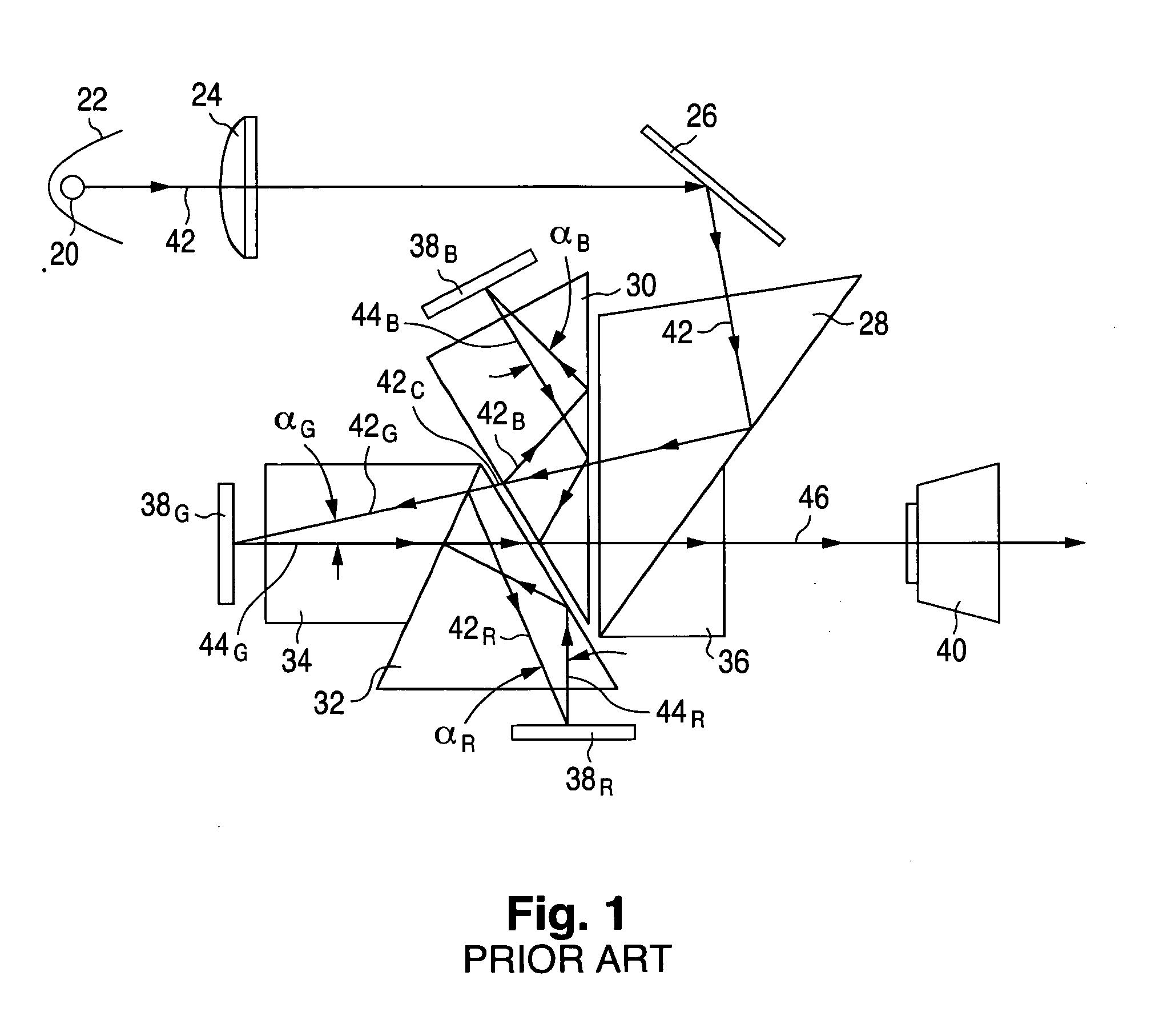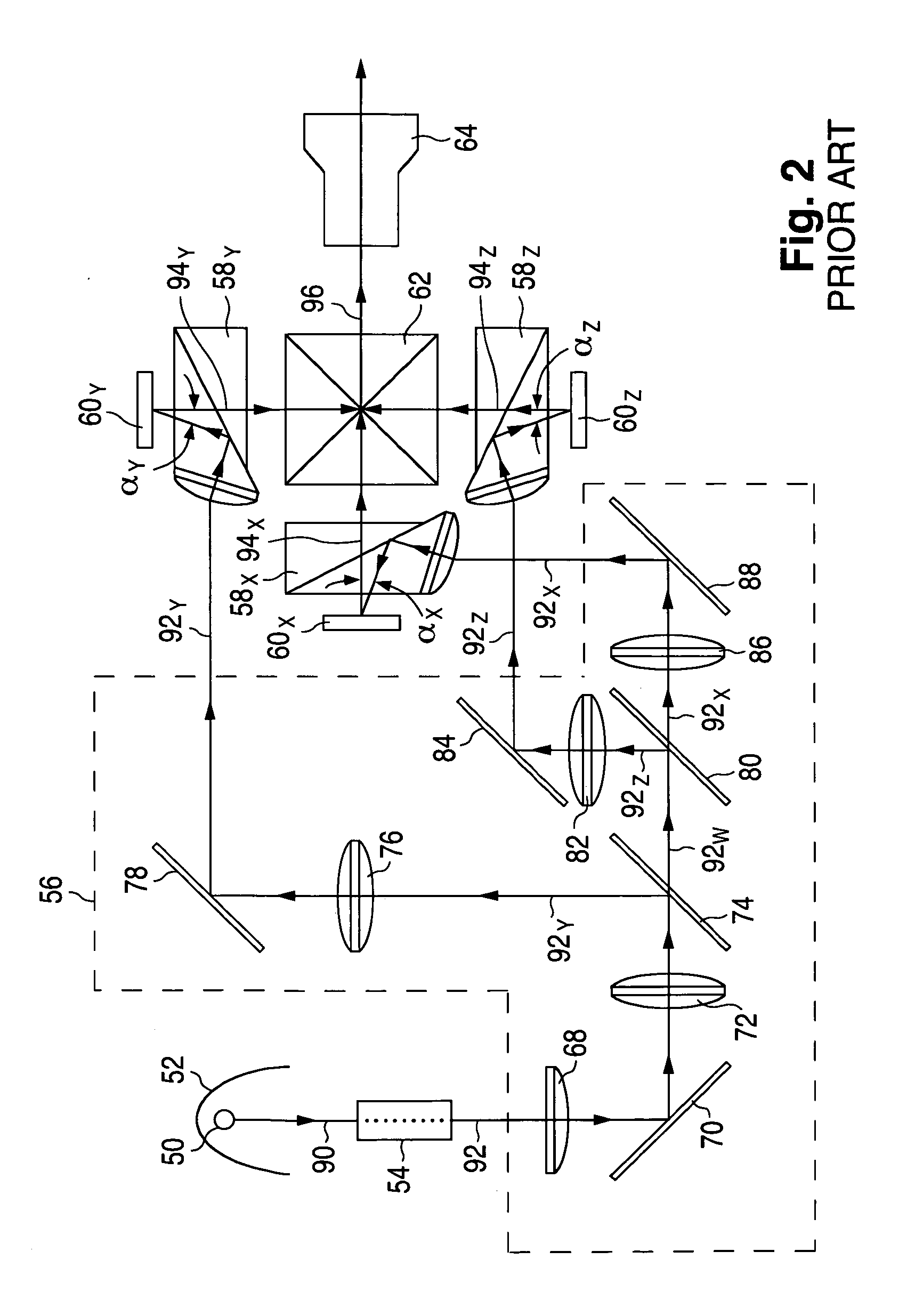Multi-panel color projector using multiple light-emitting diodes as light sources
a color projector and light source technology, applied in the field of color light projection, can solve the problems of relatively high cost of the relatively bulky projector of fig. 1, etc., and achieve the effects of high accuracy digital color modulation, high efficiency of operation, and low component count of inventive projectors
- Summary
- Abstract
- Description
- Claims
- Application Information
AI Technical Summary
Benefits of technology
Problems solved by technology
Method used
Image
Examples
Embodiment Construction
[0040]FIG. 3 illustrates a general two-panel DLP LED-source color light projector configured according to the invention. The two-panel projector of FIG. 3 consists of a one-LED first optical assembly 100, a two-LED second optical assembly 102, a beam combiner 104, a projection lens device 106, and an electronic digital video signal source 108 that provides an input electronic digital video signal 110 at a video update frequency fFR.
[0041]First optical assembly 100 is formed with a first color LED 120, first light-converting structure 122, and a first offset-angle reflective digital light modulating device 124. LED 120 emits light of a first selected color, referred to here as first selected color X, to produce a first intermediate beam 130 of light of first selected color X. Light-converting structure 122 converts first intermediate color beam 130 into a second intermediate beam 132 of light of first selected color X. As described below in connection with FIG. 4, the light-conversio...
PUM
 Login to View More
Login to View More Abstract
Description
Claims
Application Information
 Login to View More
Login to View More - R&D
- Intellectual Property
- Life Sciences
- Materials
- Tech Scout
- Unparalleled Data Quality
- Higher Quality Content
- 60% Fewer Hallucinations
Browse by: Latest US Patents, China's latest patents, Technical Efficacy Thesaurus, Application Domain, Technology Topic, Popular Technical Reports.
© 2025 PatSnap. All rights reserved.Legal|Privacy policy|Modern Slavery Act Transparency Statement|Sitemap|About US| Contact US: help@patsnap.com



